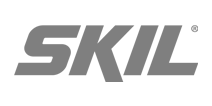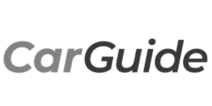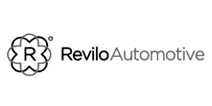
Let’s Talk… communications with Tony Garner
 We’re delighted to be joined by Tony Garner, founder, owner and managing director of Viva PR. (Not to mention, a long-standing friend!)
We’re delighted to be joined by Tony Garner, founder, owner and managing director of Viva PR. (Not to mention, a long-standing friend!)
Boasting more than 25 years’ experience in journalism and PR, Tony Garner founded Viva in 2002. He was deputy sports editor on a leading regional newspaper, before moving into PR. Tony has worked with major blue chip clients such as BAE Systems and Eurofighter GmbH, providing strategic communications consultancy around issues such as recruitment, transformation and business development. He was also commissioned by Bolton Wanderers FC to write a book about the club.
Under his leadership Viva have won a host of awards including the CIPR’s Pride Gold North West Small Agency of the Year in 2016 and 2019, PRCA Agency of the Year, national Ethical Champions and in 2021 won the PRCA’s national Workplace Wellbeing Award.
Leon
Thanks for joining us, Tony. You and I have been around for a while (I know we both look like we’re in our early 30s).
Tell me a little bit about how the media landscape has changed, and what this means for Viva?
Tony
Before getting into PR I worked in newspapers and even at the time when I left the industry in the early 2000s an awful lot of PRs were still in the habit of faxing (ask your mum) press releases to the newsdesk. Back then the Internet was a dial up luxury viewed with suspicion. The PR world was reliant on coverage clips from traditional publications to prove its worth.
Consequently, PR was valued by many in the business community — though often with a caveat: people would often say ‘it’s a bit intangible’. What they meant was that it was hard to measure the impact without very costly and sophisticated tools.
It’s hard to overstate how much the birth of social media and the Internet changed the landscape. Revolution doesn’t really do it justice.
I think many PR agencies were initially slow to spot the game-changing potential and early on allowed a new breed of digital agency to make a lot of the running. Like me, many agency leaders had newspaper or broadcast backgrounds. Old practices — billing for clippings — were too embedded.
Then along came a new breed of digital agencies armed with SEO and Google adwords who showed clients that they could establish significant KPIs. And what’s more hit them. Our world was still offering a column in a print world that might have more ego value than bottom line impact. In my view too many of us in the PR world were initially too slow to spot the danger and take advantage of the digital revolution. At last we too had tools to measure the effect of our work and could create meaningful campaigns and show how we had made a difference. The intangible could now be defined.
Our place — as storytellers, creative problem solvers and media relations experts — still had currency we just had to find a new way of expressing ourselves. The key was harnessing the same measurement tools and asking clients the right questions.
Our worlds have certainly collided, somewhat over the last few years.
One of the terms that has emerged of late is “Digital PR”. What do you make of this?
Where would you say that “Digital PR” starts and “Traditional PR” ends?
Good question. In technical terms I think you could answer that in terms of channels — think digital and you think content and social media, traditional you think releases, newspapers and lobbying. It can sound like two worlds pointed in different directions. But I’d argue that the difference has shrunk – or the venn diagram overlap has grown.
Once upon a time many PR agencies used to have media teams and digital teams — some specialising in the old ways and others focused on digital. However, many campaigns use a mix of different tools and techniques now to maximise impact and so an integrated approach is needed. Consequently you need people who at least understand both worlds even if they specialise in a particular aspect.
Going back 20-30 years, placing media, stories and content offered a few dozen options, at most. 4 TV channels, a handful of national newspapers, local press and radio.
We’re living in a world where there are thousands of channels. How does this change the approach that you take at Viva?
It all goes back to first principles — what problem are you solving, what behaviour do you need to influence or change and how best are you going to make that happen. Typically, the answer lies in taking a mixed approach and having a clear understanding of the impact you are trying to achieve.
The story you tell remains critical. That hasn’t changed but the medium influences how you might tell it.
This explosion of digital and traditional channels means the demand for content is huge. There are so many mouths to feed, audiences and stakeholders to engage with. CEOs are no longer reliant on media coverage to get their message across, they can communicate through blogs, through social channels direct to key audiences.
The proliferation of options can be tricky when working out a strategic approach to communications as you have so many options but finite budgets. But I prefer the glass half full view. It’s actually, liberating because you can use owned media to drive an agenda.
Reflecting on the past 20 years I’d say one of the biggest changes has been that PR agencies really value creativity in a way they possibly didn’t in the past. Yes, there were good stunts but creativity is no longer the preserve of the advertising agencies.
That’s a fantastic look back at our recent past… but what about the next few years? What can you see on the horizon, Tony?
I think it’s hugely exciting and packed with possibility. I think the best PR agencies will be those who can really harness the data and fuse it with creative storytelling. It’s what we aspire to. Yes, there will be threats and challenges — I see AI as a biggie here — but we’re the Covid generation. The world stopped, we survived and grew stronger so we can take on anything.
The secret then was the pivot. Remember when that was the word of the day. They will no doubt be more pivoting to do but that’s partly what makes our industry so exciting. It’s not piece work.
I think the common theme here – for both of our agencies – is change. We’ve had to adapt to the rulebook being re-written and ripped up a few times. On a practical level, what does this mean for your team? How do you cater for this with your recruitment, training and commercial flexibility?
Adaptability is one of our super-powers. We’re of a scale and mindset that means we can do a complete 180 and we don’t have to ask anyone’s permission. Do we take advantage of this enough — of course not but harking back to Covid timesheet was invaluable. We lost 45% of fee income in two weeks. We had to think on our feet and adapt processes.
Super-flexibility of course brings its own challenges. For the team here it means giving them as much autonomy as possible to look at problems and get to solutions. Obviously it needs people with the right mindset. It follows that you look for the right breed when you recruit. Agency life is not for everyone. You need to be able to keep lots of plates spinning — that’s a given. But the other thing I look for is people who are curious about the world, media. What makes people tick, politics, sport, religion, movies, trends, facts….
By contrast, I was talking to a mate who works in corporate land the other day and they had a team writing a business plan to prove to the board that a proposed investment wouldn’t work — when everyone involved knows that this is going to be the outcome. They have a process and it has to be followed.
So, what are the challenges and opportunities that all of this brings to Viva PR? Or do you see both of these as the same thing?
AI will perform a lot of the functions we currently do. The AI blog writers are already here and AI is already helping with everything from customer segmentation and marketing personalisation to identifying new marketing opportunities, optimising pricing models and helping target campaigns. It means that bots are able to work at a speed and accuracy we simply could not dream of a few years ago. What that means for the humans in the loop is obvious. We will have to adapt and move on.

Thanks Tony. Great to hear your thoughts. (I promise, I’m not an AI Bot! Although the cover image for this post WAS produced by one. Don’t tell our designers.)
Find out more about Viva PR
Connect with Tony Garner on LinkedIn
Scrapbook
We have a lot to talk about.Door4 opinions and insight - exploring performance marketing, communications and optimisation.












